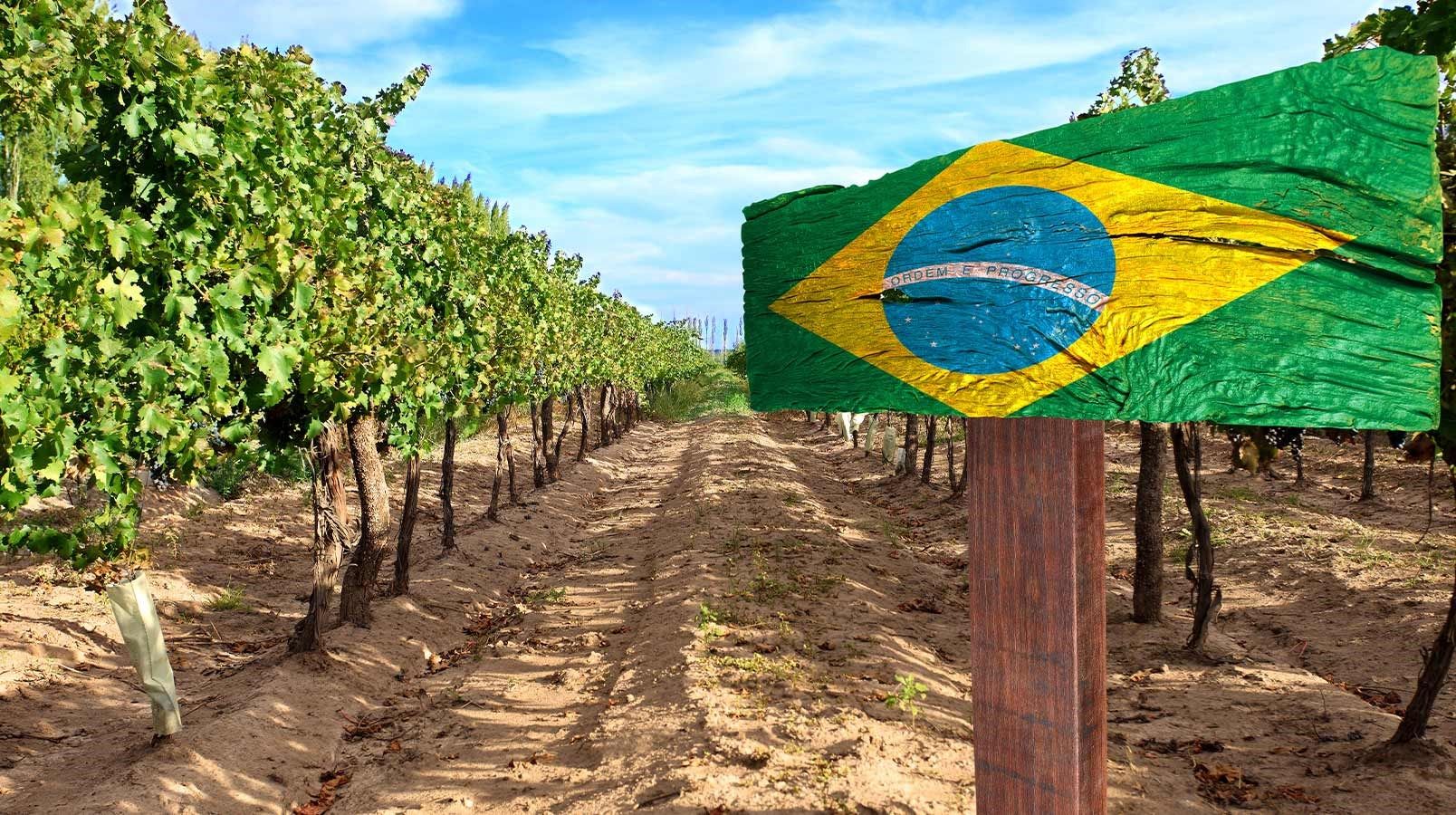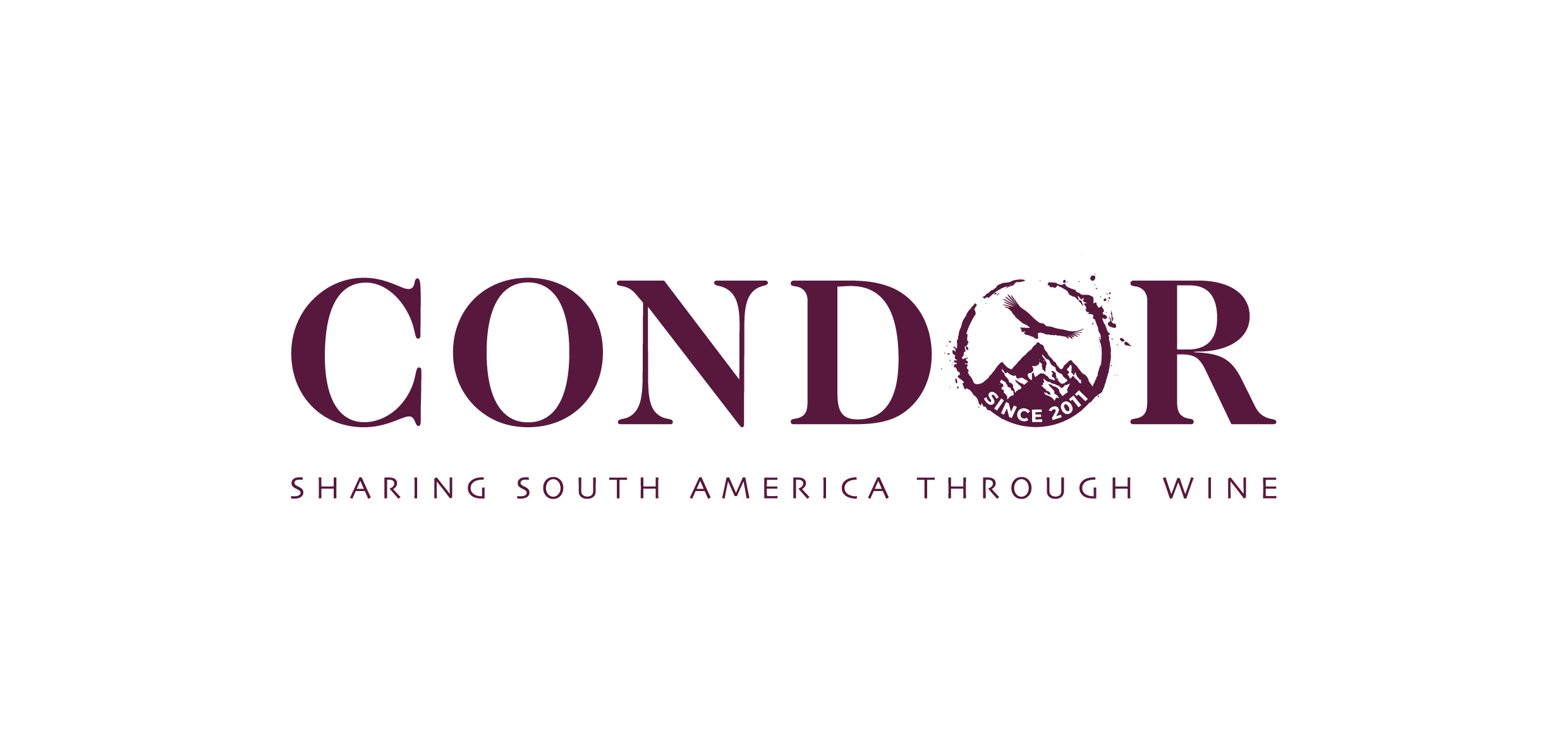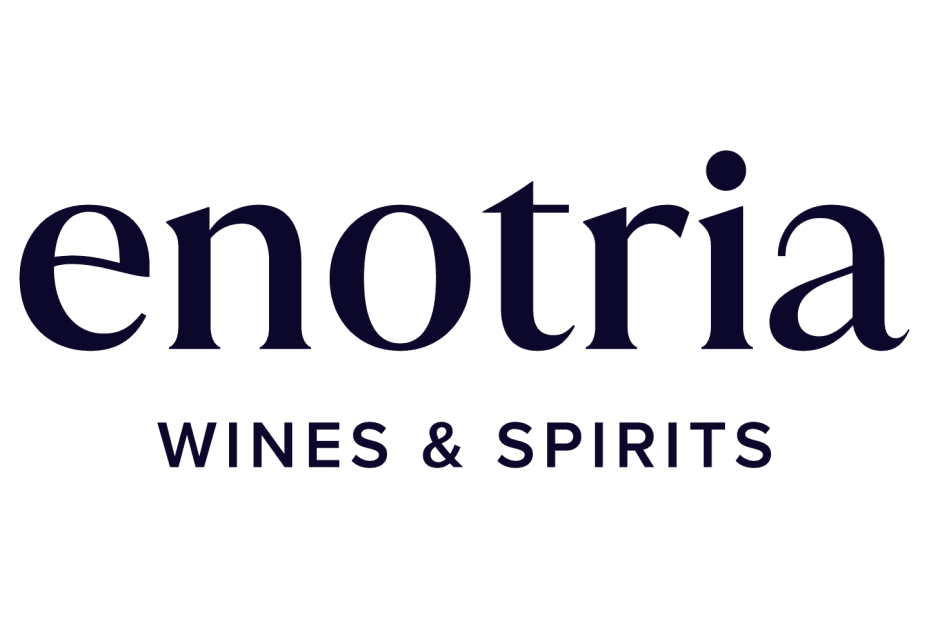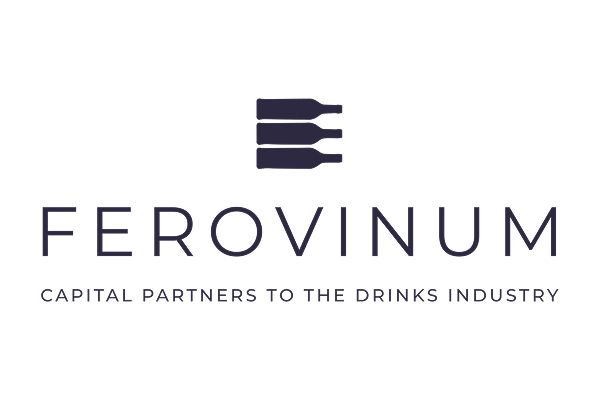Brazil is more than ready and waiting for wine buyers and tourists alike prepared to make the trip, says Janet Harrison founder of the People’s Choice Drinks Awards.
Our trip started in Sao Paulo where we were based for a conference.The city is vast, with over 22 million inhabitants – from the incredibly poor and homeless, through to the super rich.Getting around this ‘concrete jungle’ is difficult as the public transport system isn’t great, which has a knock-on effect on the number of people travelling around by car – millions of them infact.If you don’t fancy driving, Uber cabs are plentiful (and reliable) and there’s even an Uber helicopter service for those who want to avoid the gridlocked traffic!
Among all this, is a very sophisticated food and drink scene (for those who can afford it) yet surprisingly, wines from Argentina and Chile usually top the drinks menu, with some notable exceptions. All the more reason to find out for ourselves what was really going on in the wine region further south.
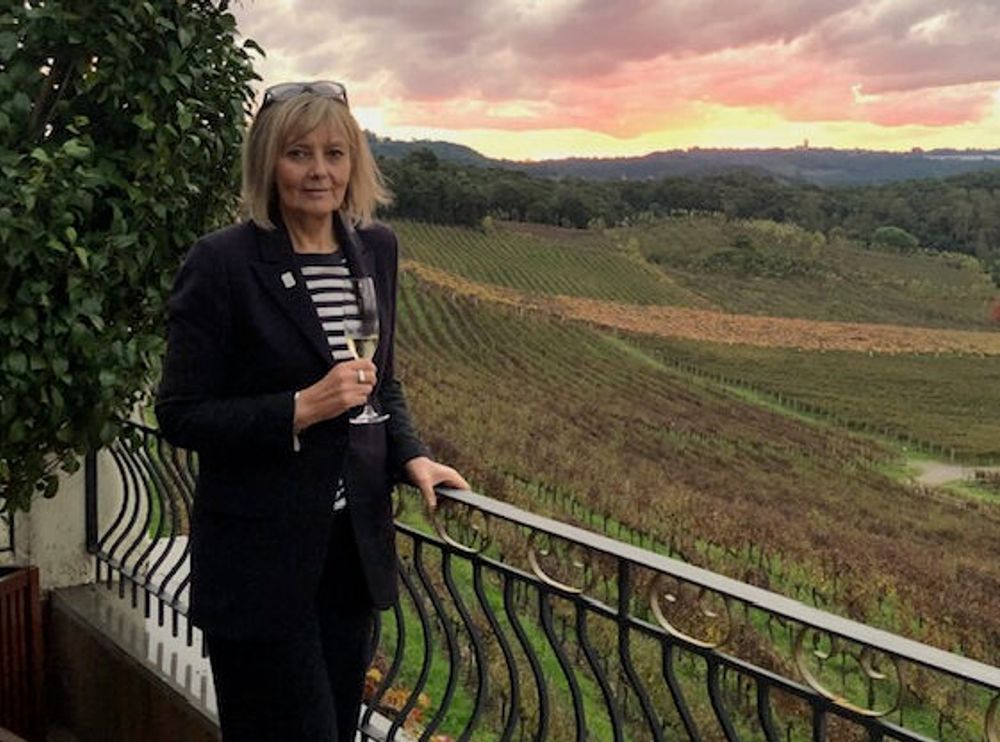
Janet Harrison reports back from a memorable first trip to Brazil and its vineyards
The best way to get there from Sao Paulo is on a short flight to Porta Alegre, (there are also direct flights to Porta Alegre from Portugal) then a 90 minute drive to the Serra Gaúcha region.The transfer was organised by our hotel.As the car journey progressed, it was like we’d landed in a different country and arriving at the wine valley, we could easily have been in Tuscany, with its rolling hills covered in autumnal vines and other lush vegetation.This is not what you’d have in mind when trying to visualise a Brazilian wine area, however, as not everyone knows that Brazil produces wine, you might never have needed to.
We decided to stay at the Marriot Hotel du Vinhos and Spa, as did a lot of well-heeled ‘Paulista’s’ (residents of Sao Paulo).The hotel is huge and overlooks the stunning Vale dos Vinhedos, which is close to many of the producers – or at least within a half-hour drive.Currently, over 95% of visitors are from Brazil itself and other South American countries.They largely see this as an education phase in promoting Brazil as a wine destination to the rest of the world.
Yes, it’s a long way from the UK, but when you think about the amount of wine enthusiasts jetting off to Argentina and Chile, it’s easy to see why they are preparing to welcome adventurous British wine travellers looking for something a bit different to add to their itinerary.
Another reason you might be fooled into thinking you are in Tuscany is many of the original settlers in this area, including those who founded family-owned wineries, were from Italy.Local restaurants serve traditional Italian cuisine, particularly in Bento Gonçalves, the main town in the area.They even have a pizza Rodízio (the traditional all you can eat Brazilian meat feast, but in pizza form.)
Wine pioneers
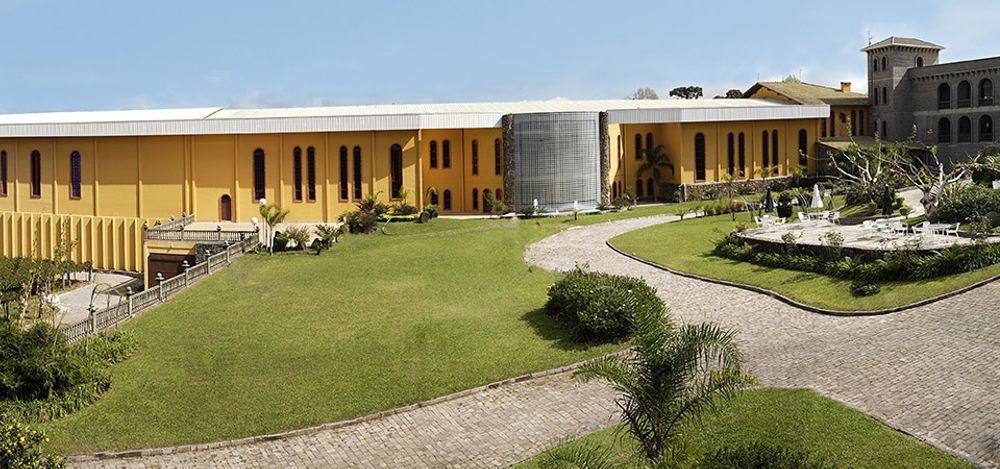
Casa Valuduga is one of the key wineries in Brazil
The main pioneers for wine tourism here are a group of six of the larger wineries including Casa Valduga and Miolo.It really is a fantastic collaboration, all working together to share expertise and resources and of course, help sell more wine to new markets.
It’s easy and safe to drive around, should you decide to hire a car at Porte Alegre, however, if you want to drink wine, rather than spit it out, there are drivers available to hire by the day or some of the friendly producers will even offer to pick you up – try doing that in Bordeaux. Just don’t rely on Uber here.
The area has a cooler temperature than you would expect, with rolling mists in the early morning and is a great place for quality sparkling wines which make up a large proportion of the area’s overall production.The noticeable presence of Chandon, on the wine route, confirms this to be the case.
The first visit was to Pizzato, an artisan producer of great quality and style, imported by Novel Wines.We were fortunate enough to be shown around by the owner, Flavio Pizzato – a very clever chap and something of a maverick.He openly chats about experimenting with grape varieties and wine blends as well as using different ageing techniques in oak and stainless steel.
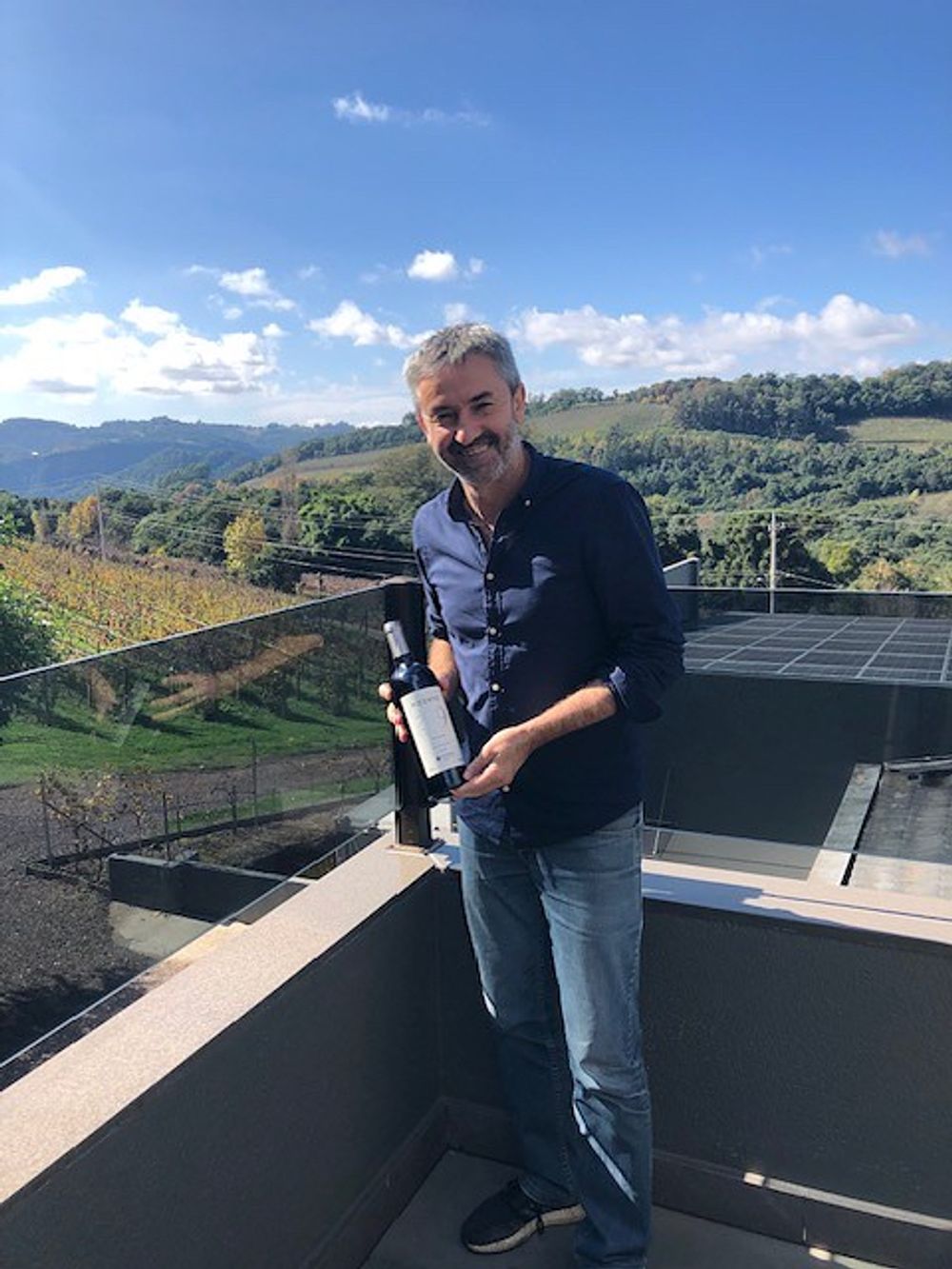
Flavio Pizzato is open to experimenting with the grape varieties he works with
Visitors can expect a very personal and interesting visit, based in their modern tasting room overlooking the valley.They also have delicious food and wine pairings featuring local cheeses and charcuterie. Grape varieties here include Chardonnay, Sauvignon Blanc, Merlot, Pinot Noir, Tannat and Cabernet Sauvignon.The freedom that comes with new world wine production very much suits Pizzato’s personality.Our personal favourites were the Tannat ‘nervi’ and the Allume Pinot noir, aged for six months in old oak and made in a Burgundian style. We also enjoyed the Egiodola – a grape variety we’d not come across before (originally from the south of France), producing a fruity wine which was a ‘winner’ with the cheese.We’d thoroughly recommend a visit here.
Discovering Miolo
From there, it was a short drive to the landmark which dominates the area, Miolo, producing around 10-12m litres of wine each year, from their four group wineries.It certainly knows how to look after a large number of visitors, judging by the coaches entering the gates each day. There are also plenty of spaces to ‘kick back’ and enjoy the area’s famous sunsets in their wine garden and it even has a ‘fizz veranda’ as part of the Miolo tower, making the most of the stunning scenery.
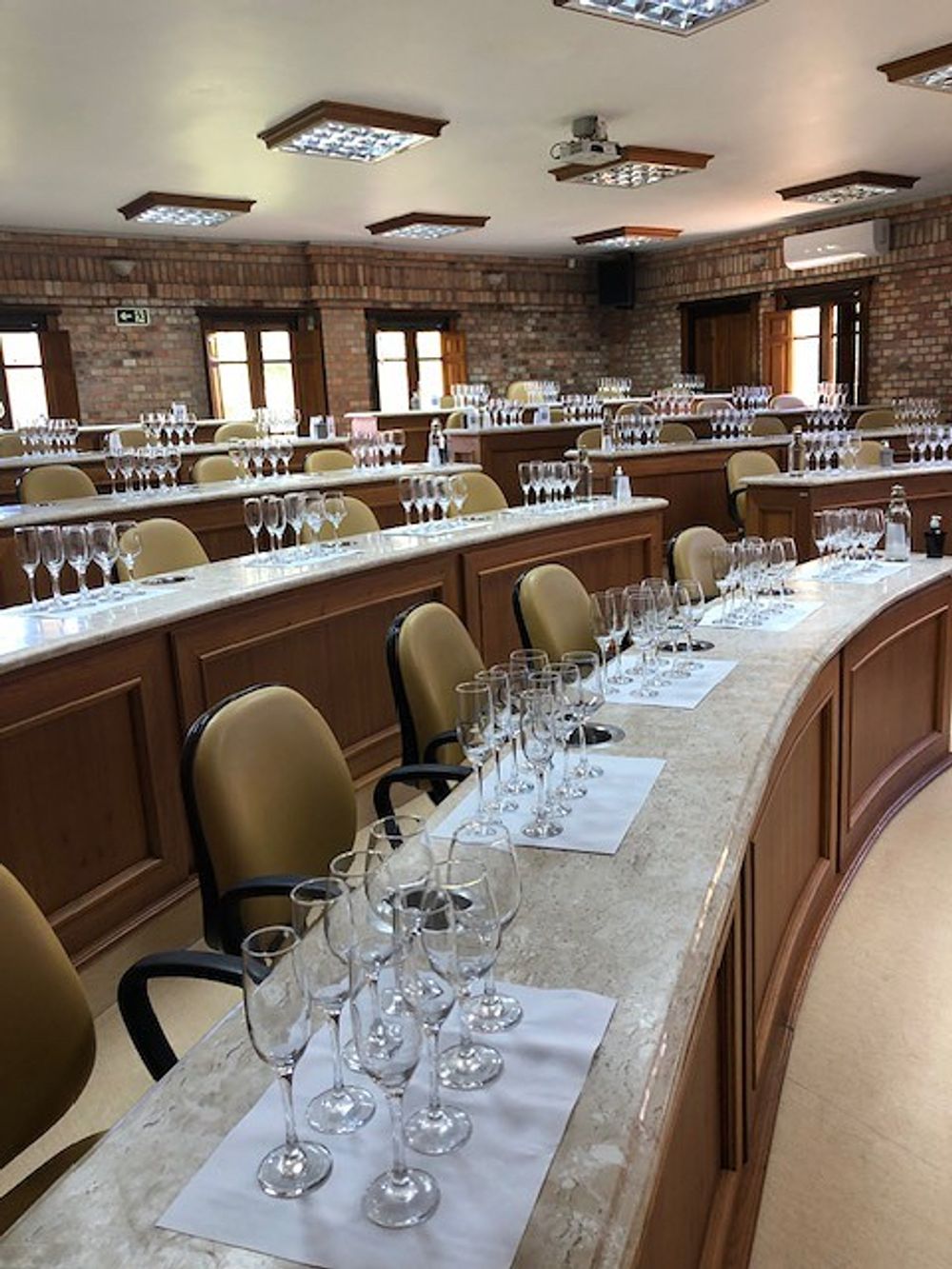
The tasting room at Miolo
Inside the tower is a super-impressive tasting classroom, designed like a university lecture theatre, which is available to visitors, particularly those in larger groups.
The range of wines made here is huge – covering all markets and budgets. All are of good quality, affordable and, like most of the area’s wines, have ‘reasonable’ alcohol levels. A great place to visit at the end of the day, for a sunset tipple.
This video captures more than any photo we tried to take:
Day two started with a visit to a small-scale producer, Tenuta Foppa & Ambrosi – very much a family affair with wines solely made from grapes they buy in from other growers.This isn’t rare in the area though, with hundreds of smaller growers supplying grapes to specific producers and the larger co-operatives.Grape varieties included Alvarinho, Trebbiano (blended with Chardonnay to make a pleasing traditional method sparkling wine) and a rosé made with Merlot and Moscato.The reds included a moreish Cabernet Franc.Their hospitality was warm and welcoming – lovely people.
Lunch was at Tabacaria Benvenuto in Garibaldi – one of the valley’s small villages.We had a great chargrilled steak cooked on the barbeque and local wine, of course.
In the afternoon, we organised a tour and tasting at Familia Salton.This really was a day of two halves, in terms of the scale of production.If you love fizz, then, this needs to be on your itinerary.
Reminiscent of some of the large-scale Australian producers in the Barossa Valley, the infrastructure here is as impressive as their wines.Arguably, it produces the best Charmat Method sparkling wines in Brazil – something its famous for.The winery tour includes a full walk around the facility, some fascinating history about the founders (a family of seven brothers from Italy) and a visit to its impressive caves, which seem to go on for miles.The end point is a tasting in the cellars where you could easily be in the crypt of a cathedral, enhanced by a soundtrack of Gregorian chants.
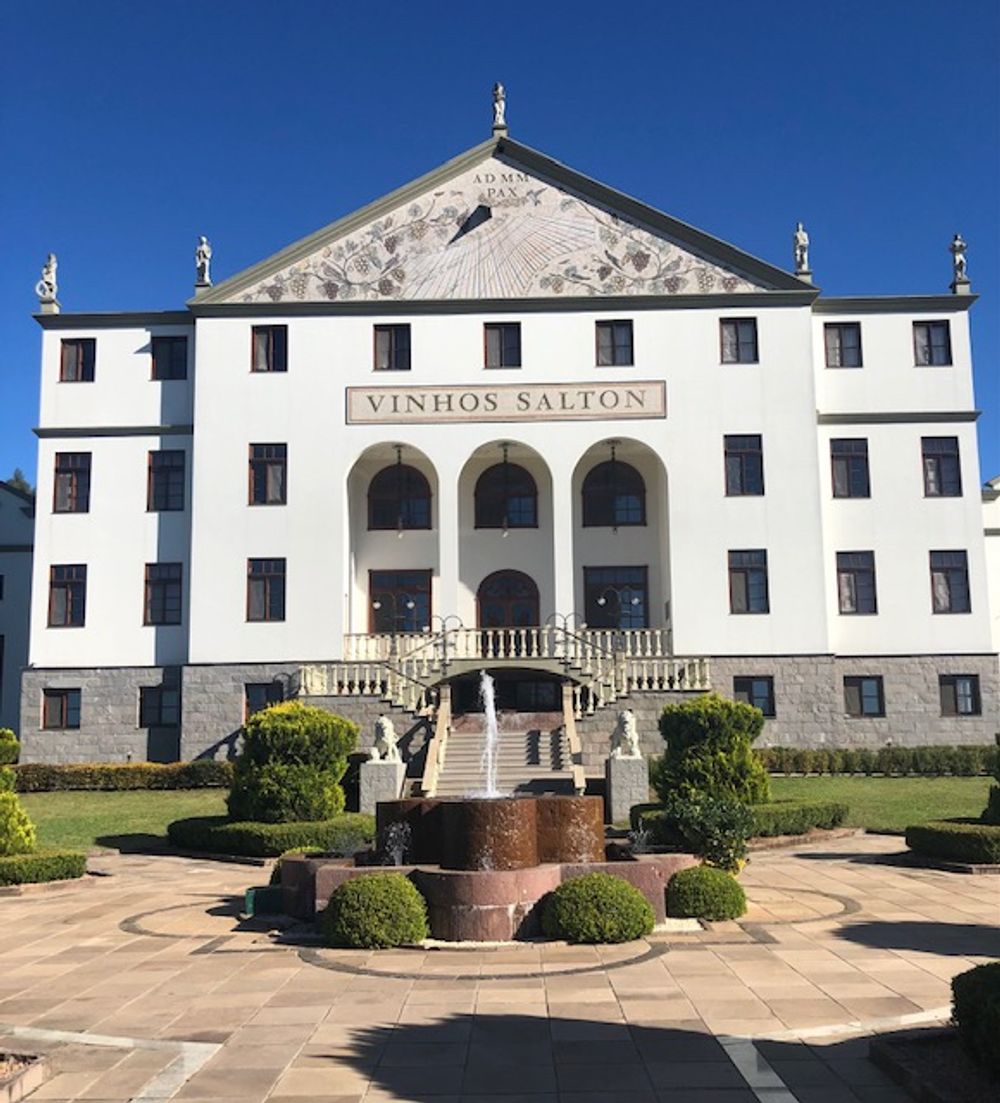
Vinhos Salton is a key producer of sparkling wine in Brazil
All the wines we tasted were of great quality and the range covers way more than fizz, however, the Ouro Brut Rosé sparkling was outstanding.It’s a top-notch Charmat Method wine, with the secondary fermentation taking place over six months in autoclaves, which reflects the care and time that goes into each bottle here.
Destination tasting
The final day we spent at Casa Valduga, more of a destination than a producer and a stunning place to visit.In addition to the winery itself, the site has two types of accommodation – charming cottages, built in traditional stone and a small hotel.They are both great options and used for individual visitors as well as groups attending larger events.It’s easy to see why this is a popular wedding venue, given the gorgeous views and village feel. They also have an on-site restaurant and shop.At this stage, we wished we’d booked in here, rather than our hotel.
The guide we had was so enthusiastic and welcoming and we were also joined by the export manager.As with Salton, the sparkling wines were stars of the show, with a brut nature Traditional Method wine, having spent two years ageing.We also enjoyed the Blanc de Blanc aged for 36 months on the lees.These were just two of their age-worthy ‘Champagne style’ wines with finesse.
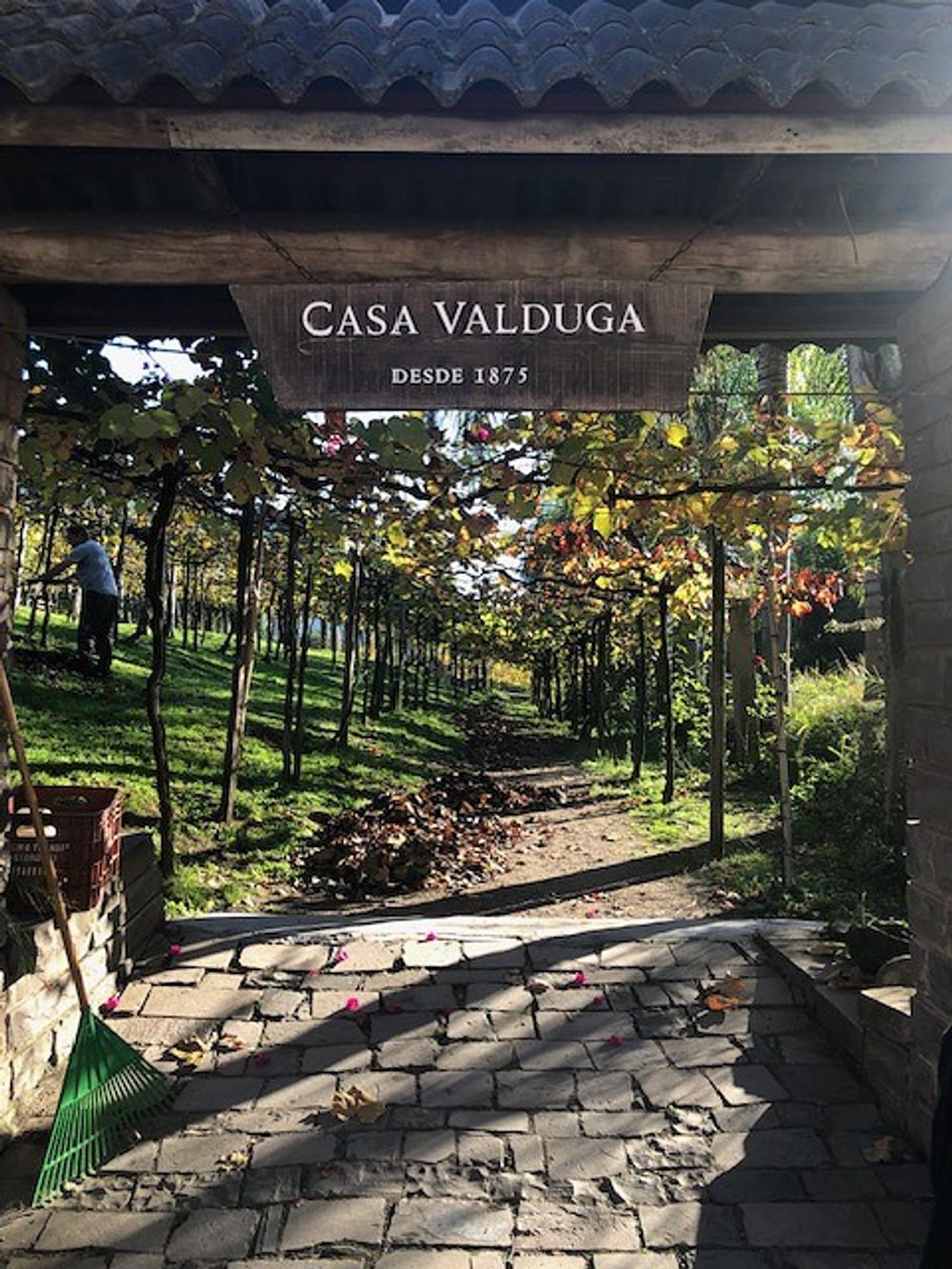
Casa Valduga: a “stunning place to visit” says Janet Harrison
Among the reds, the 2020 Marcelan stood out for us, with lively fruit and a great balance between acidity and tannins. We also tried one of its brandies (it also produces grappa), which was super-smooth and moreish.
I can’t really write about Valduga without mentioning the cats (I love cats!) They have five on the estate which are all are well loved pets.One, Mima, (@mima_casavalduga) even has her own Instagram account with over 9,500 followers!
After an all-you-can-eat Italian lunch of home-made pasta, grilled meats and panna cotta, we were beyond happy, however, it would have been perfect just to wander across to one of the cottages.A stylish, friendly and welcoming place where you could easily while away a few days, whilst visiting other wineries in the area.
In summary
To sum up: the area itself is well set up for visitors.There is a ‘wine route’ sign with map on the approach roads and whilst it is recommended that visits are arranged in advance (particularly if you need a tour in English), you’ll receive a warm welcome from everyone who make you feel very special indeed.The tours generally last from 60 to 90 minutes, but if you have more than a passing interest in wine, particularly for those in the trade, you might be there for some time longer and all the better for it I say.
Luckily, for us, the bottle of Salton Ouro Brut Rosé sparkling survived the journey home in our suitcase.We opened it on a sunny evening in the garden and it was a great reminder of our exciting trip to Brazil.Much like the wine, it had plenty of fizz.
- Janet Harrison is co-founder of People’s Choice Drinks Awards. To find out more about the competition click here.
